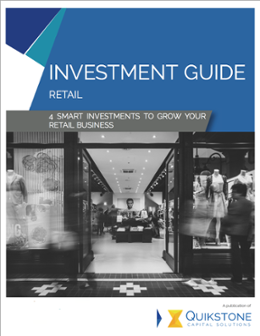
Understand Your Brand Identity
Before diving into the specifics of store styling, it’s crucial to understand and clearly define your brand identity. Your store’s design elements should reflect your brand’s personality, values, and target audience. Whether your brand is luxurious, minimalist, quirky, or eco-friendly, ensure that your store’s ambiance aligns with these qualities.
Effective Store Layout
The layout of your store plays a key role in guiding customers through their shopping journey. Here are some common layout styles:
- Grid Layout: Often used in grocery stores, this layout features aisles that run parallel to one another. It’s efficient for large inventories and helps customers quickly find specific items.
- Loop (Racetrack) Layout: This layout guides customers through a predetermined path, encouraging them to browse the entire store. It’s ideal for showcasing a wide variety of products.
- Free-Flow Layout: Perfect for boutique stores, this layout allows for creative and flexible arrangements. It encourages exploration and can create a more relaxed shopping experience.
- Herringbone Layout: Suitable for narrow or small spaces, this layout places aisles at an angle, maximizing space utilization.
Create Visual Interest
Engaging visual displays can captivate customers and enhance their shopping experience. Here’s how to create visual interest:
- Window Displays: Your store’s windows are the first point of contact with potential customers. Use them to showcase new arrivals, seasonal themes, or popular products. Keep the displays dynamic and change them regularly to maintain interest.
- Focal Points: Use focal points within the store to draw attention to specific products. This could be a beautifully arranged table, an eye-catching mannequin, or a unique piece of decor.
- Color Schemes: Choose colors that align with your brand and appeals to your target audience. Use colors strategically to create a mood or highlight specific areas of the store.
Lighting Matters
Lighting can have a significant impact on the ambiance of your store and the way products are perceived. Here are some lighting tips:
- Ambient Lighting: This is your primary source of light and should create a warm and inviting atmosphere. Avoid harsh lighting that can make the store feel unwelcoming.
- Accent Lighting: Use lights to highlight specific products, displays, or areas of the store. Track lighting, spotlights, or uplights can add depth and focus.
- Task Lighting: Ensure that areas where tasks are performed, such as checkout counters or fitting rooms, are well-lit.
Maximize Space
Effective space utilization ensures that your store feels spacious and organized, even if it’s small.
- Vertical Space: Use shelves and wall-mounted displays to make use of vertical space. This not only maximizes storage but also keeps the floor area uncluttered.
- Mirrors: Strategically placed mirrors can make the store appear larger and brighter.
- Flexible Fixtures: Invest in movable fixtures that can be easily rearranged for different layouts and displays.
Sensory Experience
Engaging multiple senses can create a memorable shopping experience:
- Music: Play music that reflects your brand’s vibe and appeals to your target audience. Keep the volume at a comfortable level.
- Scents: Pleasant scents can enhance the shopping experience. Consider using subtle fragrances that align with your brand.
- Textures: Incorporate various textures in your displays and decor to add depth and interest.
Seasonal and Thematic Displays
Keep your store fresh and exciting by introducing seasonal and thematic displays. This not only attracts repeat customers but also encourages impulse buys:
- Seasonal Themes: Rotate displays based on seasons, holidays, or special events. Use props and decor that match the theme.
- Product Grouping: Group related products together in themed displays to create a cohesive story. For example, a summer display could feature beachwear, sunglasses, and sunscreen together.
Personalization and Technology
Integrate technology to enhance the shopping experience:
- Digital Displays: Use digital screens to showcase promotions, new arrivals, or interactive content.
- Smart Mirrors: Install smart mirrors in fitting rooms that offer styling suggestions or allow customers to request different sizes without leaving the room.
- Mobile Integration: Ensure that your store integrates seamlessly with your online presence. Offer features like mobile payment options or in-store tablets for browsing inventory.
Customer Comfort
Ensure that your store is comfortable and welcoming:
- Seating Areas: Provide comfortable seating areas for your customers to relax, especially in fitting rooms or near high-traffic areas.
- Cleanliness: Keep the store clean and well-maintained at all times. This includes floors, displays, and restrooms.
- Climate Control: Ensure that the store is well-ventilated and maintains a comfortable temperature.
Styling your retail store for success involves a combination of strategic planning, creativity, and attention to detail. Embrace technology and seasonal themes to keep the store dynamic and personalized, and prioritize customer comfort to create a memorable shopping experience.
Download our free guide to learn more!




